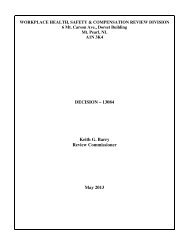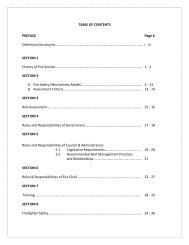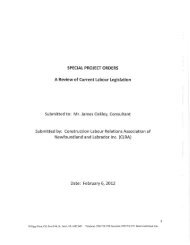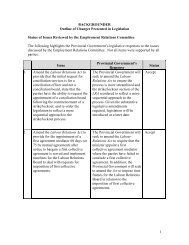Basic Level Pre-Course Reading
Basic Level Pre-Course Reading
Basic Level Pre-Course Reading
Create successful ePaper yourself
Turn your PDF publications into a flip-book with our unique Google optimized e-Paper software.
Chapter 6<br />
Casualty Management<br />
3. The most important point to remember when transporting patients is:<br />
a) transport decontaminated patients if necessary<br />
b) transport the most critically injured first<br />
c) transport the casualties to hospitals as quickly as possible<br />
d) ideally transport only decontaminated patients<br />
4. How can you help yourself during a CBRN incident?<br />
a) work with a buddy<br />
b) focus on the immediate task<br />
c) take a break<br />
d) both a and c<br />
e) all of the above<br />
5. History shows that for every physical casualty in a mass casualty incident<br />
there may be ______ psychological victims<br />
a) twice as many<br />
b) zero<br />
c) 4 to 20 times as many<br />
d) an equal amount of<br />
e) none of the above<br />
6. Which of the following can help reduce the psychological impact of a CBRN<br />
incident on first responders?<br />
a) increased knowledge though increased training<br />
b) participation in response exercises<br />
c) knowing that medical and rescue support are available<br />
d) all of the above<br />
e) none of the above<br />
7. CBRN mass casualty incidents generate stress on responders because:<br />
a) information is often scarce<br />
b) the death rate may be very high<br />
c) the lack of resources to provide optimal care<br />
d) the incident was deliberate<br />
e) all of the above<br />
CBRN First Responder Training Program<br />
62<br />
<strong>Basic</strong> <strong>Level</strong> <strong>Course</strong>

















